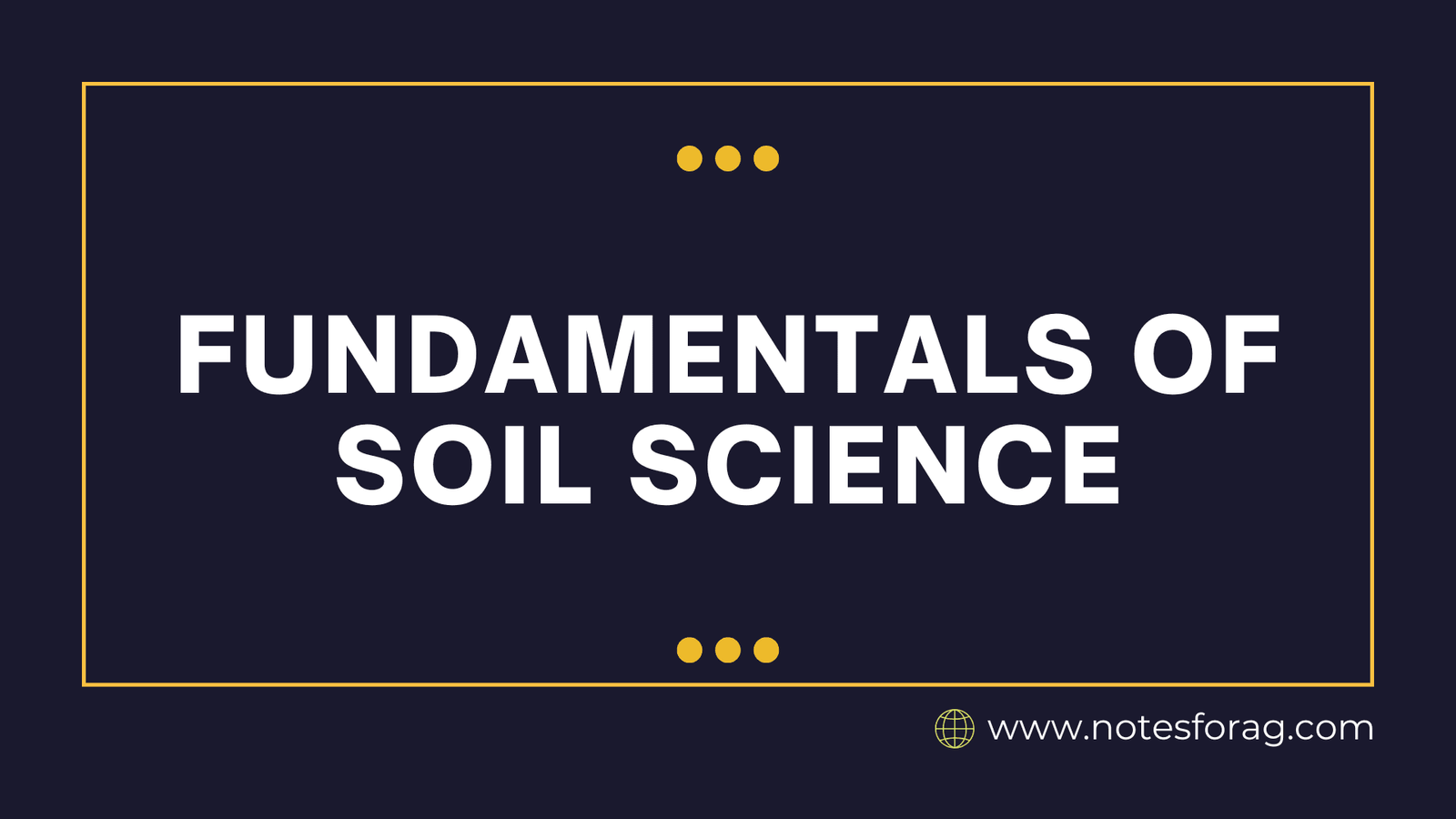Fundamentals of Soil Science is an essential area of study within environmental science, agriculture, and geology. It explores the formation, composition, properties, and management of soils as a natural resource. It is a multidisciplinary field that studies the formation, classification, and mapping of soils, as well as their physical, chemical, biological, and ecological properties. Understanding the fundamentals of soil science is essential for various applications, including agriculture, environmental science, and land management.
Table of Contents
Fundamentals of Soil Science
1. Soil Formation
- Parent Material: The underlying geological material from which soil develops.
- Weathering: The process of breaking down rocks into smaller particles through physical, chemical, and biological processes.
- Soil Horizons: Distinct layers within the soil profile, typically including:
- O Horizon: Organic layer rich in decomposed plant material.
- A Horizon: Topsoil, a mix of organic matter and minerals.
- E Horizon: Eluviation layer, where leaching occurs.
- B Horizon: Subsoil, where materials leached from above accumulate.
- C Horizon: Weathered parent material.
- R Horizon: Bedrock.
2. Soil Properties
- Physical Properties:
- Texture: The relative proportions of sand, silt, and clay in the soil.
- Structure: The arrangement of soil particles into aggregates or clumps.
- Porosity: The volume of pore spaces in the soil, affects water and air movement.
- Bulk Density: The mass of soil per unit volume, indicating compaction and porosity.
- Chemical Properties:
- pH: A measure of soil acidity or alkalinity, influencing nutrient availability.
- Cation Exchange Capacity (CEC): The ability of soil to hold and exchange positively charged ions (cations), affecting nutrient retention.
- Nutrient Content: Essential nutrients such as nitrogen (N), phosphorus (P), potassium (K), calcium (Ca), magnesium (Mg), and sulfur (S).
- Biological Properties:
- Soil Microorganisms: Bacteria, fungi, and other organisms that contribute to nutrient cycling and organic matter decomposition.
- Soil Fauna: Larger organisms like earthworms and insects that enhance soil structure and aeration.
3. Soil Classification
- Soil Orders: The highest level of soil classification, based on properties and formation processes (e.g., Mollisols, Alfisols, Ultisols).
- Soil Taxonomy: A hierarchical system used to classify soils based on their characteristics.
4. Soil Water
- Soil Moisture: The water held in the soil, is crucial for plant growth.
- Field Capacity: The amount of water soil can hold after excess water has drained away.
- Wilting Point: The minimum soil moisture level at which plants can no longer extract water.
5. Soil Erosion and Conservation
- Erosion: The removal of the topsoil layer by wind, water, or human activity, leading to loss of soil fertility.
- Conservation Practices: Techniques such as contour plowing, terracing, and cover cropping to prevent soil erosion and maintain soil health.
6. Soil Management
- Fertility Management: Practices to enhance soil nutrient content, including the use of fertilizers and organic amendments.
- Sustainable Practices: Approaches that promote soil health and productivity while minimizing environmental impact, such as crop rotation and reduced tillage.
7. Soil and the Environment
- Soil as a Natural Resource: Understanding the role of soil in ecosystems, carbon sequestration, and its impact on water quality.
- Soil Pollution: The contamination of soil by hazardous substances, affecting plant growth and human health.
What Makes Soil Unique?
Soil properties vary widely depending on texture (particle size), structure (arrangement), color (mineral content), porosity (air spaces), pH levels (acidity/alkalinity), moisture content, nutrient availability, and biological activity.
1) Texture:
Soil texture depends on the proportions of sand (largest particles), silt (medium-sized particles), and clay (smallest particles). For example:
- Sandy soils drain quickly but retain fewer nutrients.
- Clayey soils hold water well but may impede root penetration.
- Loamy soils strike a balance between sand, silt, and clay—ideal for agriculture.
2) Structure:
The arrangement of soil particles into aggregates called “peds” influences aeration and water movement within the soil profile.
3) Color:
Soil color provides clues about its composition:
- Dark soils indicate high organic content.
- Reddish hues suggest iron oxides.
- Mottled patterns often signal poor drainage conditions.
Conclusion
Fundamentals of Soil Science is essential for sustainable land use, agriculture, and environmental conservation. A thorough understanding of Fundamentals of Soil Science properties, processes, and management practices is crucial for addressing challenges related to food security, climate change, and ecosystem health.
Frequently Asked Question
What is Fundamentals of Soil Science?
Fundamentals of Soil science is the study of soil as a natural resource, focusing on its formation, classification, and mapping, as well as its physical, chemical, biological, and ecological properties.
What are the main components of soil?
Soil is composed of mineral particles, organic matter, water, air, and living organisms. These components interact to support plant growth and various ecological functions.
Why is soil health important for the environment?
Healthy soil supports plant growth, regulates water cycles, stores carbon, and provides habitat for diverse organisms. It plays a crucial role in maintaining ecosystem balance and mitigating climate change.
Related Articles
Rural Sociology & Educational Psychology
Fundamentals of Horticulture
Comprehension & Communication Skills in English

